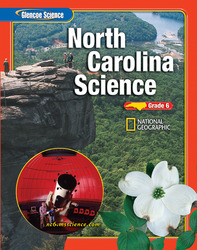1.
A) yellow B) green C) red D) blue 2.
A) concave B) convex C) reflecting D) plane 3.
A) convex B) concave C) flat D) plane 4.
A) slower in water than in air B) faster in water than in air C) the same speed in water and air D) fastest in water 5.
A) in a circle B) only at right angles C) in all directions D) in a straight line 6.
A) translucent B) opaque C) solid D) transparent 7.
A) to magnify an image B) to make objects appear closer C) to gather as much light as possible D) to reflect light at an object 8.
A) The angle of incidence is equal to the angle of reflection. B) The angle of incidence is equal to the normal. C) The normal is perpendicular to the reflecting surface. D) The angle of reflection is equal to the normal. 9.
A) The speed of light is reduced to zero. B) The speed of light remains constant. C) The speed of light changes from one medium to the next. D) The light is repelled by some materials. 10.
A) energy B) liquid C) gas D) matter 11.
A) yellow, magenta, and cyan B) red, blue, and yellow C) red, orange, yellow, green, blue, indigo, and violet D) black and white 12.
A) convex mirror B) convex lens C) concave mirror D) plane mirror 13.
A) made of the same material as B) smoother than C) rougher than D) just as smooth as 14.
A) They converge. B) They reflect at right angles. C) They are absorbed. D) They diverge. 15.
A) computers B) mirrors C) lenses D) cameras 16.
A) nearsighted eyeglasses B) a side mirror on a car C) a car windshield D) magnifying glass 17.
A) the retina B) the cornea C) the optic nerve D) the lens 18.
A) the distance from the mirror to the reflecting object B) the distance from the center of the mirror to the focal point C) the distance light travels along a reflective surface D) the difference between the angle of incidence and the angle of reflection 19.
A) they emit light B) light refracts through them C) they absorb light D) light reflects off them 20.
A) the reflecting surface itself B) the line perpendicular to where the light ray strikes the surface C) the line parallel to a reflecting surface D) the angle of the incoming beam of light














